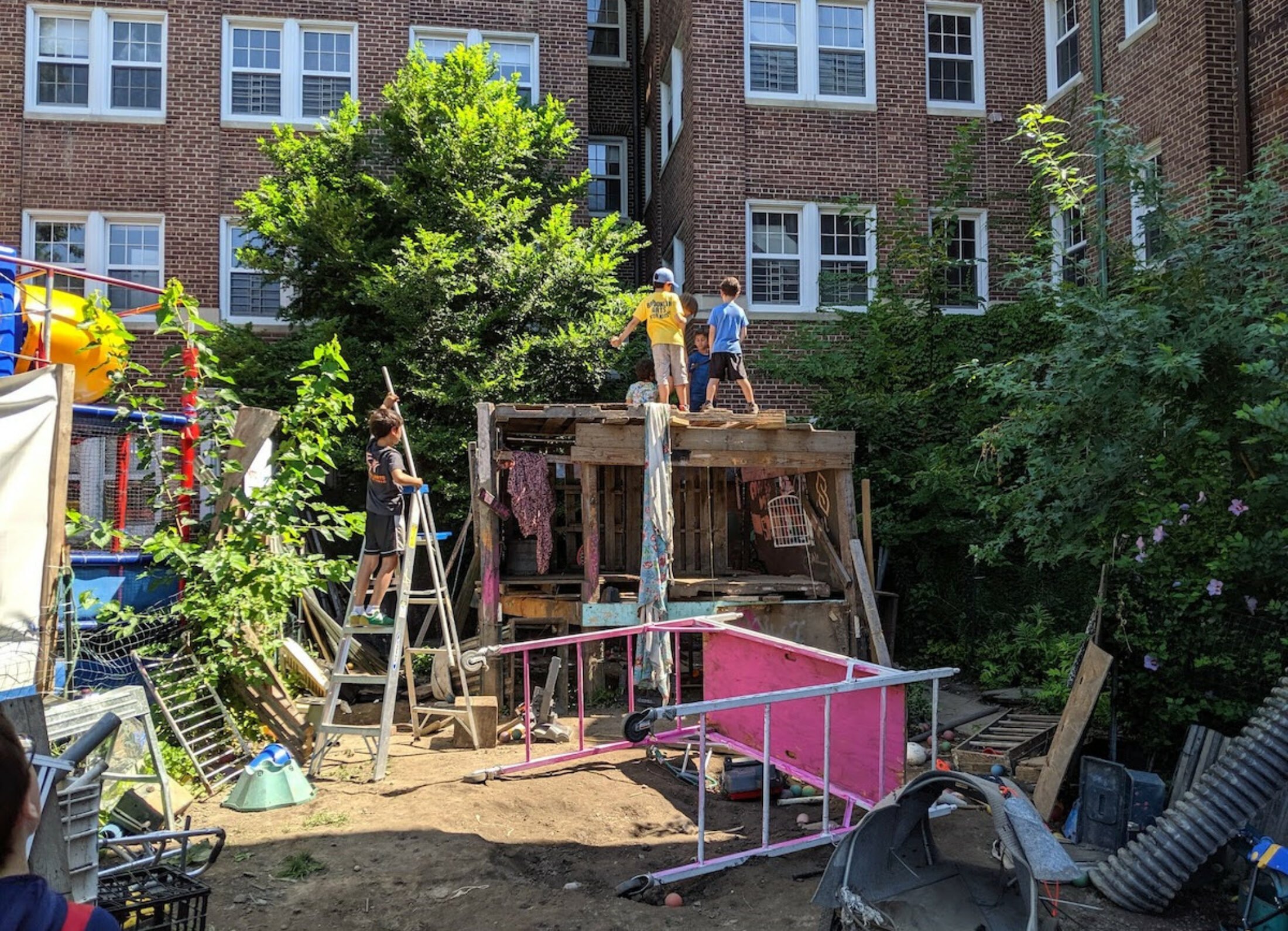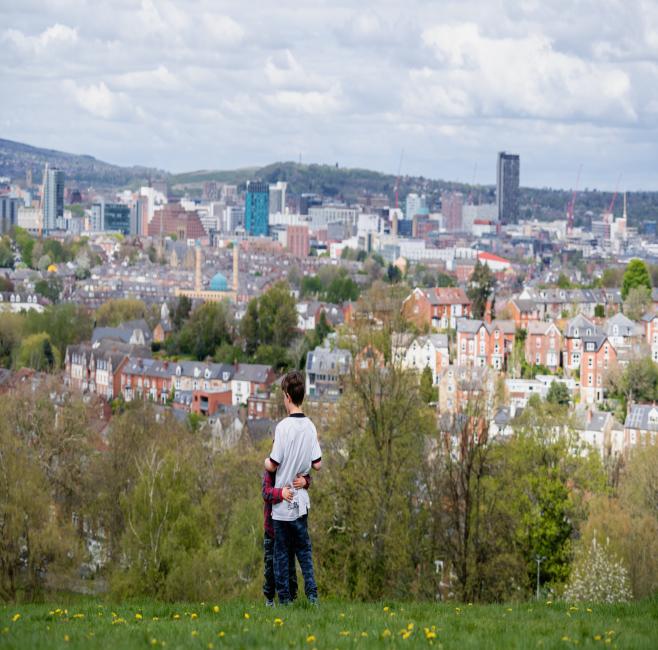Small city dwellers, big issues
It is estimated that by 2050, almost 70% of the world’s children will live in urban areas. However, children seem to have completely disappeared from public space. They’re excluded to spaces that are secure and separated off, yet this feeling of being “confined” should be compared with the latest public health statistics: in the space of 40 years, 9-16 year olds have lost 25% of their physical fitness, and in the UK, only 27% of children play regularly outside their own homes compared to 71% for their grandparents’ generation. Allowing children to reclaim outdoor space by adapting urban areas has become a pressing matter. Winning back this space involves creating more calm and welcoming public spaces, a change likely to make the city more liveable for all.
A city where play is encouraged
Play is a child’s fundamental right, as stated in Article 31 of the International Convention on the Rights of the Child. But is the city a favourable environment?
Public space for children seems to be limited to getting from one secure point to another (i.e. the park, school, after-school activity, home). Their urban territory is limited to standardised play areas whose use is limited by schedules and rules. But what about space for free play, creativity and imagination? More and more cities are tackling the subject with the urban recreational movement.
Often considered to be at the forefront of urban planning, the city of Copenhagen has come up with “staffed playgrounds.” These free play areas feature an indoor space where children can play in bad weather and where parents can have a coffee (although children can also come unaccompanied). The place is managed by an association and one or two people are permanently present on site to ensure that everyone has a good time.
Another initiative popular in several countries around the world is Streets For Kids, a temporary event which consists of blocking car traffic on a street for the day. With the space freed and secured, it is opened up to children who can play freely and reclaim the public space. Activities and events are often organised, such as games, sports, and raising street sharing awareness. In France, it is estimated that more than 220 Streets For Kids (or “Rues aux enfants” as they are known in France) were organised between 2016 and 2022. Some communities are even trying to take the approach even further. Take Lyon, where the city is committed to a global approach towards a child-friendly city. For example, its adapting schools to build climate resilience by greening playgrounds and retrofitting buildings to make their heating systems more energy efficient. Another part of the approach includes a virtuous food plan, whose objectives include bio-waste recycling and canteen menus featuring 100% organic and 50% locally sourced produce.
Rediscovering the pleasure of active mobility
The decline of children’s presence on the streets began in the middle of the 20th century and coincided with the rise in popularity of cars and cities designed around them. While an eight-year old child in the 1920s could travel up to 10km alone, a century later, the range of autonomy of a child of the same age is often limited to the corner of their street. William Bird’s famous map of Sheffield is a striking example.
While Finland is an exception with a majority of schoolchildren going to school by bike, elsewhere in the Western world many children go to school by car. This is due to public space being unsafe and a lack of connectivity between the different modes of public transport.
In Barcelona, residents were looking for change. As such, they launched a successful initiative which sees the city’s streets come alive every Friday with the “bicibús,” the name given to the project which sees young children go to school together by bike. Children are clearly having fun and the journey is carried out in complete safety, as police escorts the bike bus procession and cuts off car traffic. Other cities like San Francisco, Glasgow and Buenos Aires have been inspired to launch their very own bike buses. In certain neighbourhoods, the Catalan capital also sees public space decorated with murals and art work inviting children to come and play there.
Over in the Netherlands, the reappropriation of urban space involves the concept of “woonerf.” These are streets designed in a way so that drivers cannot drive faster than at a walking pace. Everyone, children included, is therefore free to move around and play in complete safety.
Children key stakeholders in urban planning
To create a true city for children, more and more cities are working to integrate children into their urban design approach. This is the case for the canton of Basel which launched the “eyes at 1.20m” guide,” an innovative and original approach to encourage urban planners to take children into account when designing public space. The document was designed in the format of a 1.2 meter-long perforated measuring stick, allowing the reader to adopt the position of a child’s height and view. For each phase of an urban planning project, the guide outlines methodological principles and highlights the need for the presence of and interaction with nature.
In France, the city of Lille has developed an ultra-comprehensive system to strengthen the power of children’s voices in the city. There are numerous actions, including increased consideration of children’s opinions, a participatory budget from the age of nine and even children having their say in how the places they use are managed, placing the northern city amongst the new leaders of the child-friendly city.
More space for active mobility, nature and citizens’ initiatives? If transforming cities around children’s needs becomes a major urban planning approach, it’s because it also undoubtedly contributes towards adults accepting and being educated about change. Is the child-friendly city the first step towards the city of ecological transition?
What’s that: Junk Playground
Also known as an “Adventure Playground,” these are free, unrestricted play spaces, completely opposed to the idea of classic, overprotected children’s playgrounds. You won’t find a slide, nor a swing, but the freedom to let your imagination run wild, to tinker, create and invent with what you find on site, like pallets, old tyres, wood, cardboard, and tools (real ones!). First created in Copenhagen in the 1940s, the concept has mainly developed in Anglo-Saxon countries, notably in New York. Children are confronted with a self-directed and formative risk which teaches them autonomy and responsibility.




